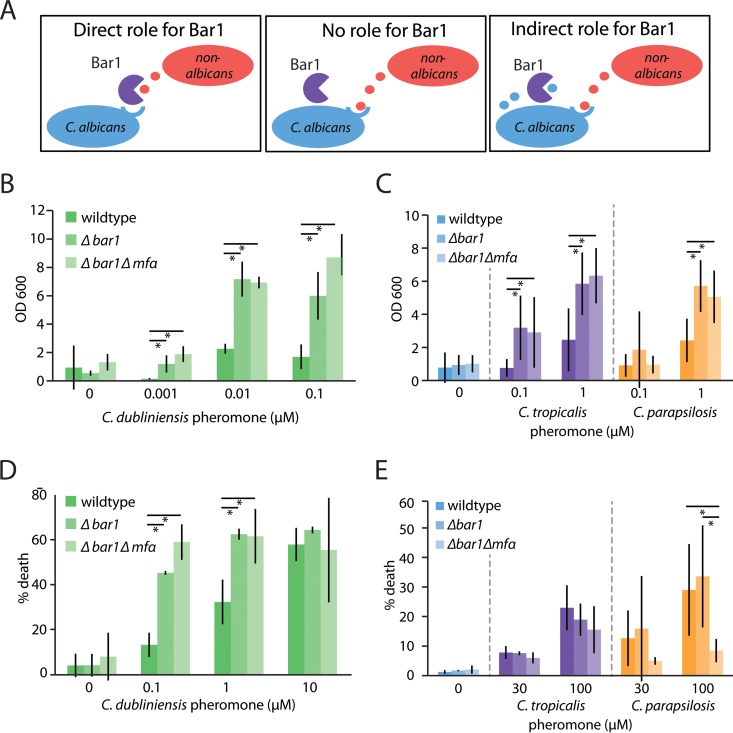FIG 6 .
Role of C. albicans BAR1 in interspecies pheromone signaling. (A) Three alternative models for how C. albicans Bar1 may affect interspecies signaling between Candida species. (i) Bar1 may affect signaling through direct recognition and degradation of nonnative pheromones, (ii) it may have no effect on interspecies signaling events, or (iii) it may play an indirect role in signaling due to degradation of C. albicans α pheromone (and blocking of autocrine signaling) following receptor activation with a nonnative pheromone. C. albicans wild-type, bar1Δ/bar1IΔ, and bar1Δ/bar1Δ mfαΔ/mfαΔ MTLa white cells were incubated with C. dubliniensis (B), C. tropicalis (C), or C. parapsilosis (D) α pheromones in a biofilm assay. After 2 days, adherent cells were quantified by spectrometry at 600 nm. Mean ± SD. *, P < 0.05 by t test. (E) C. albicans wild-type, bar1Δ/bar1Δ, and bar1Δ/bar1Δ mfαΔ/mfαΔ MTLa opaque cells were treated with C. tropicalis or C. parapsilosis α pheromones. The pheromone response was quantified by determining the percentage of cell death after 5 h of pheromone exposure by flow cytometry. Mean ± SD. *, P < 0.05.

